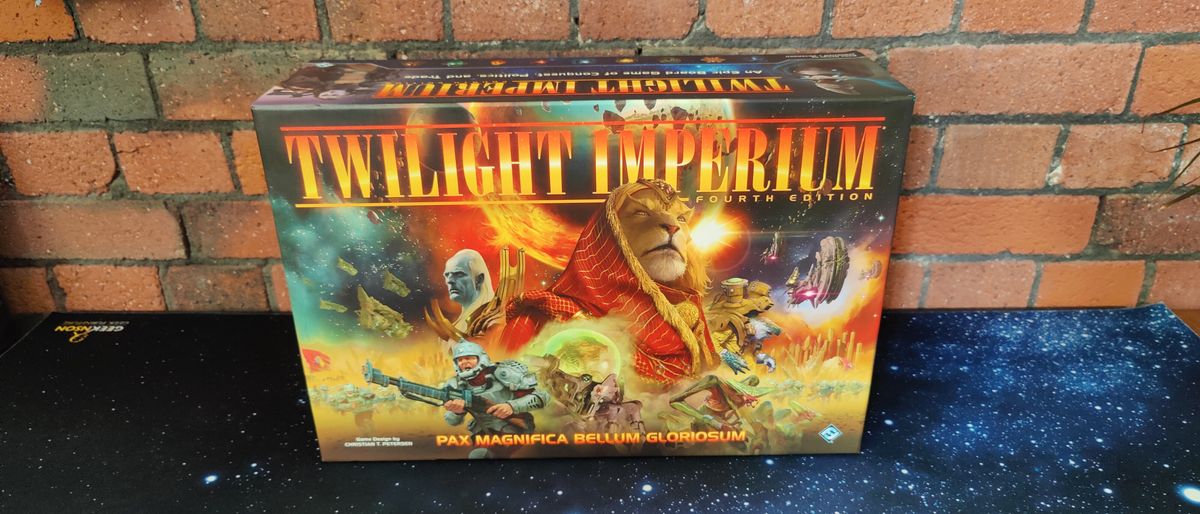12DOVE Verdict
Twilight Imperium is a sci-fi epic that expects a lot of commitment from you, but the rewards are unbeatable depth, strategy, and fun for players willing to take the plunge.
Pros
- +
Incredibly deep strategy
- +
Easy to get immersed in the story and role-play your chosen race
- +
It’s just a ton of fun
Cons
- -
It’s one of the most expensive board games out there
- -
Games take forever to play
Why you can trust 12DOVE
Oh, you think you’re a serious board gamer, do you? Well, allow me to introduce you to Twilight Imperium (just imagine I dramatically slam the box onto the table). This epic space strategy is infamous amongst the board gaming world for being massive, complicated, and brilliant.
I can dispel one of those myths off the bat, because once you get into the swing of things, Twilight Imperium isn’t all that complex. There are a lot of moving parts to be sure, but it’s incredibly intuitive. It is massive, though – there’s no getting around that this game requires an enormous table to play on, and at least a full day commitment if you want to finish it. And yet, despite that, I still think it’s one of the best board games ever made.
Twilight Imperium features & design
| Price | $149.99 / £119.99 |
| Ages | 14+ |
| Players | 3 - 6 |
| Complexity | Medium-high |
| Genre | Sci-fi strategy |
| Lasts | 6 - 12hrs per game |
| Designers | Dane Beltrami, Corey Konieczka, Christian T. Petersen |
| Publisher | Fantasy Flight Games |
| Play if you like | Cosmic Encounter, Nemesis, Risk |
- Take your rightful place as ruler of the galaxy, by any means necessary
- Assemble fleets, conquer worlds, and engage in political scheming
- Huge box set full of miniatures, cards, datasheets, and tiles
Twilight Imperium is a game for between three and six players. The more players you have, the more varied and interesting your game will be, although bear in mind that it will also significantly increase the playtime.
During set-up, you’ll build the galaxy from tiles (following instructions in the rulebook). Players then choose their faction from a pool of 17 different alien races. Each race has their own home system, special abilities, unique technologies, and starting forces. Different species specialize in certain areas of the game. The Emirates of Hacan (the space lions on the box) are masters of trade and commerce, for example, so expect them to be the richest player at the table. Meanwhile, the Universities of Jol-Nar are intergalactic nerds – great at researching new technologies, but they suck in a fight.
Once everyone has a faction, everyone chooses a color and grabs all their ships, cards, and tokens that they’ll need for the game. The main rulebook is pretty good at explaining the lengthy set-up process, and the general flow of the game too, but I’d also recommend watching this YouTube video by RTFM – it helped me a lot in my first game.



Alongside the rulebook, there is a rules reference booklet that explains all the key concepts of the game. It’s in alphabetical order and also has an index, so you can easily look things up whenever you’re unsure. It’s a nice touch, as scrambling through the main rulebook looking for the section where a specific mechanic is mentioned can take a while. The command sheet that everyone gets also has a quick reference of the gameplay order you can refer to.
Once everything is set up, it’s time to start playing. But what exactly is the point of Twilight Imperium? Long story short: to rule the galaxy. The previous rulers have thrown down a gauntlet and declared that the species who proves themselves first can take the throne.
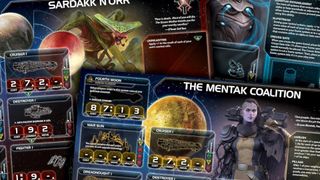
In terms of how it looks, Twilight Imperium is an attractive, premium-feeling blend of classic sci-fi (such as aliens that are basically human other than blue skin and a wig) with modern sensibilities like a 'digital' overlay that seems to have been taken directly from the displays of modern Star Trek or Mass Effect.
You’ll do so by completing objectives, and the first player to score 10 points wins. Most of the objectives are public ones, slowly revealed over the course of the game, but players can also get secret personal objectives too.
Fair warning before you dive into Twilight Imperium – it takes a long time to play, especially if you have several first-timers in your group. Twelve hours is not unreasonable for your first game, and that’s assuming you’ve done a bit of prep to try and learn the rules (understandably, it takes a while to take over a whole galaxy). It's not overly complicated though. Once you get going, the core gameplay is surprisingly intuitive.
If you’re the kind of player who enjoys grand strategy, political intrigue, subterfuge, and good old-fashioned interstellar warfare, then Twilight Imperium stands above all others. It’s the ultimate big board game, and one of the best classic board games ever made.
Twilight Imperium gameplay



- Three players minimum, but gets better with more players
- Offers unmatched strategic gameplay opportunities, balancing diplomacy and honorable warfare with betrayals and backstabbing for good measure
- Be prepared for a long game
Twilight Imperium is split into rounds, and each round is split into four phases: strategy, action, status, and agenda. In the strategy phase, each player (starting with the Speaker) chooses a strategy card to control for the turn. Each one has a stronger primary ability that only the controller can use, and a weaker secondary ability that other players can pay to use. They also have a number on them which determines the turn order for the action phase.
There are eight strategy cards to choose from; Leadership, Diplomacy, Politics, Construction, Trade, Warfare, Technology, and Imperial. They’re fairly self explanatory in terms of the sections of the game they interact with: Technology lets you research new tech and upgrade your ships, Construction lets you build new spaceports to build ships from, Politics lets you choose who gets to be the Speaker of the galactic council (you’ll usually choose yourself, giving you more political clout) etc.
Each card is valuable at the right time, and players will often be vying for the same ones, making going first as the Speaker super important. Once you’ve all got your strategy cards for the round, you move on to the action phase.
The action phase is where the lion’s share of the game takes place. Here, players move ships around the galaxy, build new stuff, and get into fights. Players alternate turns, taking a single action each, until all players have passed.
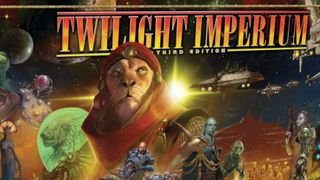
Wondering what's changed between the older 3rd Edition and this new version? Accessibility is top of the list. 4th Edition is far more streamlined, with big improvements to tech and trading mechanics. Objective cards are now revealed from the start as well to speed things up. Superficially, the artwork is also more saturated and has been given a futuristic 'digital' feel.
You’re limited on how many actions you can take by the tokens in your command pool. You have a set number of command tokens and can spread them out between your strategy pool (used for doing stuff, moving ships, building units, etc.), fleet pool (how many ships you can have in one system), and tactics pool (a few things, but mainly activating secondary abilities of other player’s strategy cards). You only regain two command tokens every round, so you need to be smart when spending your resources.
You’ll need a fleet to defend your empire, and you’ll need resources to build that glorious armada. This is why you’ll need to expand out quickly and claim planets. Each planet has a resource and influence value – resources are used to build units, while influence is typically spent as political capital during the later agenda phase. You can also trade with other empires to make trade goods, which can be spent as resources or influence. There are a range of spaceships to build, tiny fighters, mid-sized cruisers, and gargantuan Death Stars… er, I mean, war suns. While bigger ships are typically more powerful, they also cost more resources to construct.
When two opposing fleets meet, the results are usually devastating to both sides since combat attacks are rolled simultaneously. This prevents sneak attacks being too powerful, and forces you to commit to a fight if you want to be sure of victory. Ships have attack values and you roll a D10 for each attack – roll over the value and you deal damage, usually blowing up a ship in the process.
Once everyone is done moving, colonizing, and fighting, players do their bookkeeping in the status phase: scoring objectives, refreshing tokens, and drawing new action cards, etc. Then it’s time for the best part… the thrilling political discourse. No, seriously.


Once someone captures Mecatol Rex, the planet at the center of the game board, every turn ends with a meeting of the galactic council called the agenda phase. An agenda card is drawn and players will, in turn, vote for or against (or even abstain) on a new law, ending with the Speaker. Then a second agenda card is drawn and voted on. You can choose to use political influence to boost the power of your vote. New laws and directives can change the rules of the game and have huge consequences, from blowing up half of everyone’s infantry to each player not being allowed more than four tokens in their fleet pool.
You’ll end up in serious debates trying to convince your allies (and enemies) to vote the way you want… or you can even just bribe someone. Laws can really shape the course of the game, so you want to make sure they swing in your favor. However, you can’t win every vote, so spending your influence wisely is key.
Alongside all of this there are action cards, one-time use cards that can swing combats, repeal laws, mess with votes, and generally ruin someone else’s day. They’re extremely satisfying to use when played at the right time.
As I said, this is a long game, but the rewards for the significant time investment are plentiful. There are few other games that offer the depth and strategic possibilities of Twilight Imperium. You need military strategy as well as political guile to win. Real political thinking is required and realistic scenarios play out. Border tensions, military arms races, backstabbing, appeasement, and bribery are all on the table as valid options.
Hell, winning can often be a poor strategic choice, as it puts a target on your head. I’ve held back on scoring objectives that I could have, just because it would have propelled me into the lead and brought a coalition of pain down on my head. If you have the patience and time – and you can find three to five like-minded individuals – then there really is nothing quite like Twilight Imperium. I recently played with three newbie players and all of them wanted to play again, which is no mean feat after an 11-hour board game session.
Should you buy Twilight Imperium?
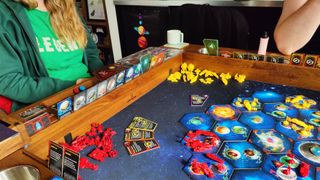
Obviously, I love Twilight Imperium, but that doesn’t mean it’s an easy game to recommend. The rules aren’t nearly as dense and impenetrable as they first appear, yet there’s no getting around the massive time commitment that a game takes. If you start early, it’ll take all day. Otherwise, it’s going to take two days.
If you have a group of friends who love grand strategy and are willing to put in that kind of time, it’s the easiest recommendation I’ve ever made. Sure, it’s expensive, but it’s worth every penny if you'd play it even just a few times. Otherwise, you’re probably better off poking your head through the door of some local board game communities to see if anyone else has it and wants to get a game going.
Buy it if...
✅ You want a truly epic and involved sci-fi saga
This is an enormous game in every sense of the word, and that scale helps it feel like you're truly deciding the fate of the galaxy. It is by far and away the best at what it does.
✅ You want an experience you'll never forget
There's just no comparing to Twilight Imperium; I can't think of anything else like it on the market right now. The matches you'll have will really stay with you as a result.
Don't buy it if...
❌ You don't want a long-ass game
There's no escaping the bum-numbing length of Twilight Imperium games. If a full day spent at the table doesn't sound like fun to you, steer clear.
❌ You don't know anyone who'd be interested in playing
This game is so expensive that I'd only recommend it if you know you've got a couple of friends who'd like to get involved.
How we tested Twilight Imperium
Disclaimer
This game was purchased for the purpose of this review.
Our reviewer went hands-on with Twilight Imperium in a mega-game that lasted hours, all to make sure they experienced everything it had to offer.
You can find out more about our process via the 12DOVE review policy, or by dropping in on our guide to how we test board games.

Ian Stokes is an experienced writer and journalist. You'll see his words on 12DOVE from time to time, and he works as Entertainment Editor at our sister site Space.com.
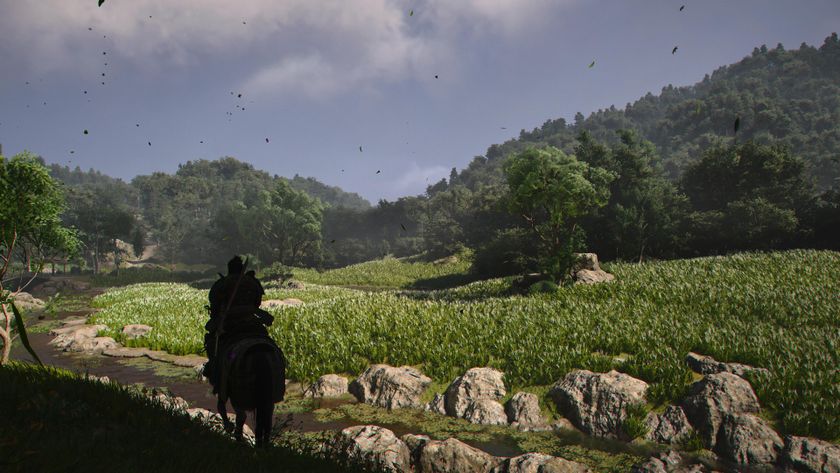
Assassin's Creed Shadows' delays were mostly used to polish the RPG, creative director confirms, not for deeper changes brought about by Star Wars Outlaws reaction
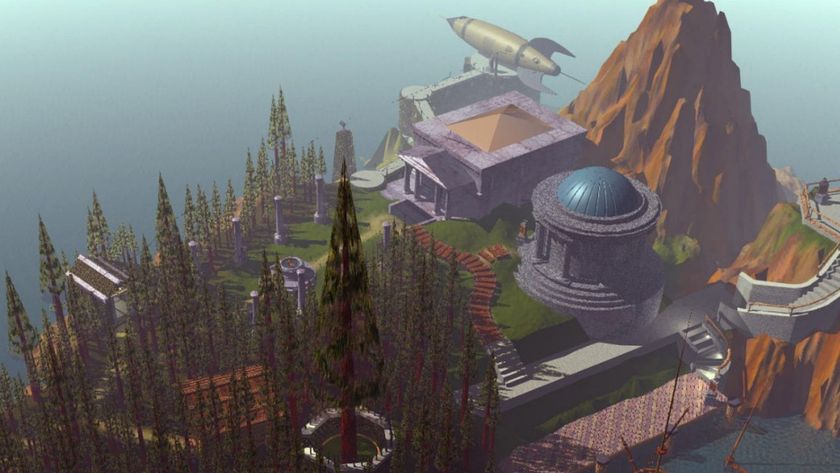
37-year-old studio behind iconic PC game Myst and one of the longest-surviving indies in the world just laid off "roughly half the team"

Filming has started on the second season of beloved Hulu show Paradise, only weeks after the hit Disney Plus show ended

